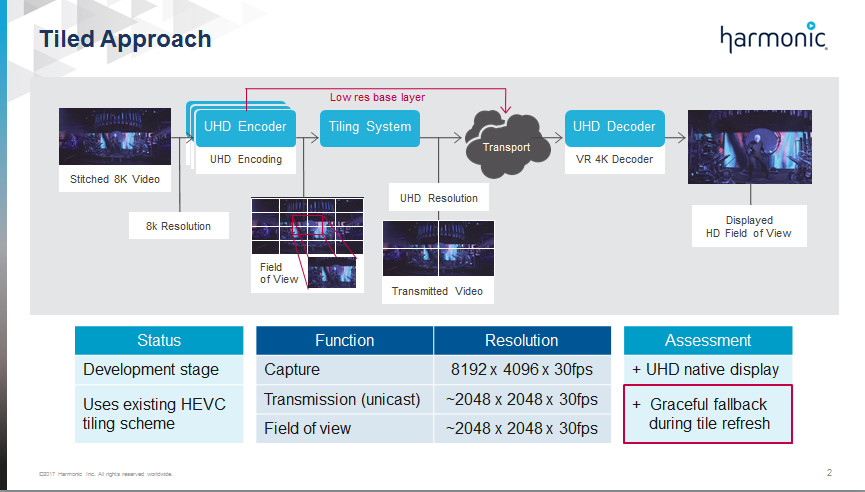SMPTE 2017: Q&A—Thierry Fautier, Harmonic

Click on the Image to Enlarge
Click on the Image to Enlarge
Click on the Image to Enlarge
Click on the Image to Enlarge
Click on the Image to Enlarge
Shortly before the start of SMPTE 2017 Technical Conference & Exhibition, TV Technology spoke with Thierry Fautier, vice president of video strategy, Harmonic, about his Thursday session “State-of-the-Art Virtual Reality Streaming: Solutions for Reducing Bandwidth & Improving Video Quality.”
TV TECHNOLOGY: Tiling seems like an interesting solution to the bandwidth problem VR streaming faces. Could you describe the problem and how VR tiling offers a solution?
THIERRY FAUTIER: First let us look at the limitations of a classical system, where a 4K video is sent to an HMD after stitching and only 1/10 can be watched and therefore creates a fuzziness effect on HMD.

Tiling is solving two problems:
· Increases the resolution of VR video as the sent video is the native resolution of the HMD, vs. 1/10 is watched in classical method
· Decreases the bitrate of the transmitted video, as only the viewport of the watched video is sent, resulting in a saving of up to 80 percent, we have measured 50-75 percent in our experiments
The professional video industry's #1 source for news, trends and product and tech information. Sign up below.
We show the system diagram of a tiling system to HMD.

TVT: How can tiling anticipate which way a VR viewer will look in order to make sure the correct image information is present to enable a seamless experience?
FAUTIER: There areltiple techniques used: mu
· First, the full viewport video is sent in lower resolution in case the tiles are not refreshed instantly
· Second, the client can request a larger window than the one watched (pre fetch)
· Last, we can do some prediction of where the user will move it head next, this works well for Live video. Of course for VoD we can also build analytics.
TVT: Is VR tiling strictly a solution for head-mounted displays, or is it appropriate for tablet and smartphone use regardless is whether the device is swiped or used in magic window mode?
FAUTIER: At IBC, we were showing how tiling is used on a tablet. The same principle applies vs HMD for any 2D device (phone, tablet, PC, TV, etc.)
We show the system diagram of a tiling system to 2D device.

TVT: What about 4K and 8K VR? Do these present a more difficult challenge for VR tiling given the larger amount of data required?
FAUTIER: There are two approaches:
· By saving, in that case we encode in tiling 4K, transmit HD and therefore get a similar quality as legacy at 50-75 percent bitrate saving
· Quality increase, in that case we encode in tiling 8K, transmit 4K and therefore get a much better quality than legacy same at the same bitrate
One very important aspect: 8K VR tiling works on legacy devices. This is a key feature of tiling.
See diagram and measurements.


